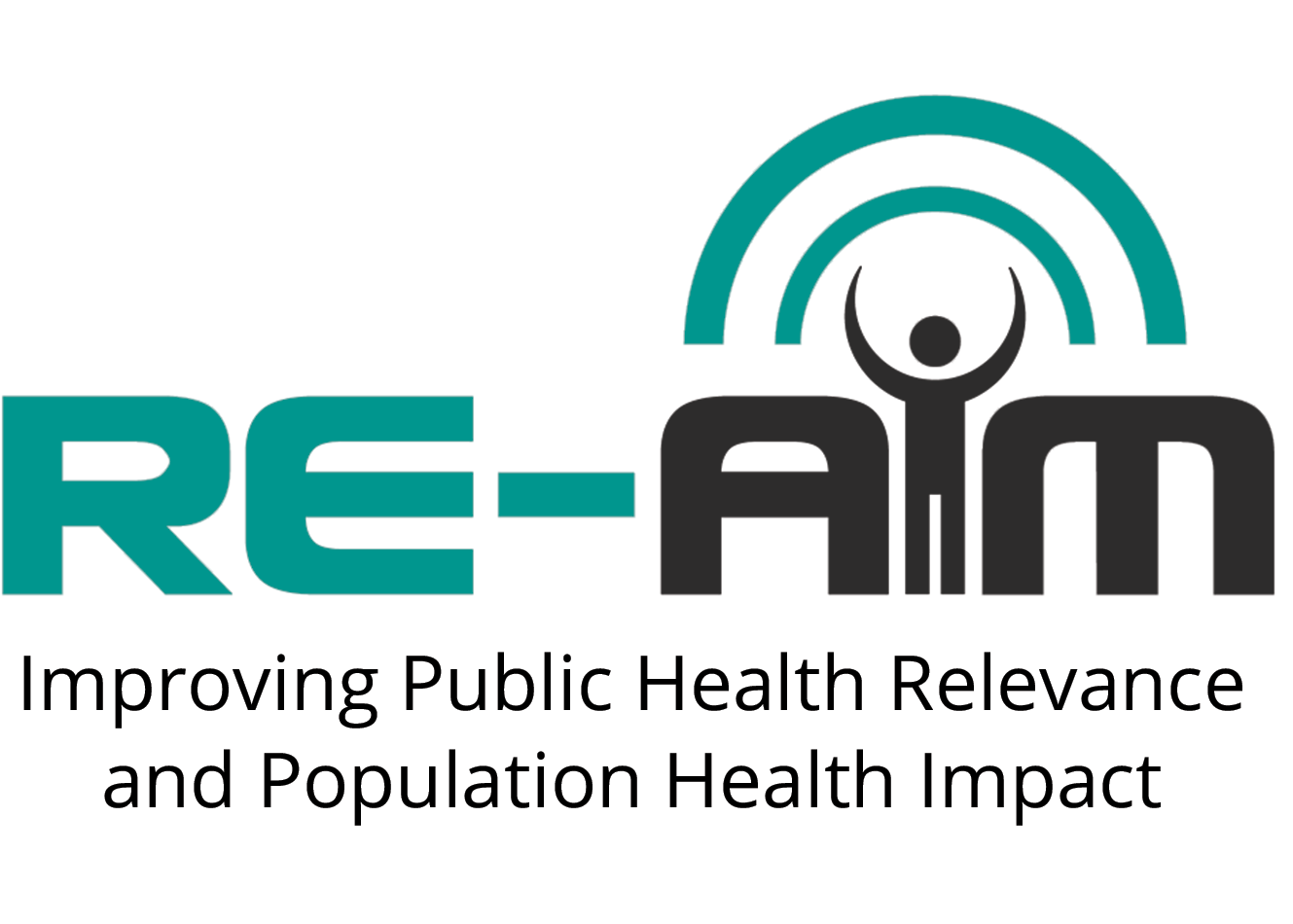RE-AIM Guidance
Guidance on using Iterative PRISM and RE-AIM Across Project Phases
This section of the website is to provide guidance on how to use PRISM and RE-AIM in an iterative manner to provide real time feedback on issues and progress in a given study, program, intervention, or project (hereafter referred to as project), throughout the three project phases of Planning, Implementation, and Sustainment.
Iterative PRISM and RE-AIM is a structured approach to guide the goal setting and monitoring of progress for a project as a new approach, guideline, or evidence-based intervention is implemented. The structured approach allows for assessment of progress at regular intervals. It also establishes ongoing meaningful engagement of the implementation team, including keeping all members of the team on the same page and focused on the implementation goals set by the team. A strength of Iterative PRISM and RE-AIM is that it acknowledges that adaptations occur naturally in a project as new approaches, guidelines, or evidence-based projects are implemented in various contexts and settings. Adaptations are changes or modifications to an intervention, an implementation delivery strategy, or the context in which they occur.
The Iterative PRISM and RE-AIM process guides teams in: (1) determining which PRISM context domains and RE-AIM outcomes are most important at given stage/state/phase of a project (while acknowledging that needs and context may change), (2) assessing progress for these prioritized domains and/or outcomes, and (3) identifying implementation adjustments and adaptations (i.e., goals and action plan) to improve progress for the prioritized domains and outcomes. Key components in this new application of PRISM and RE-AIM include strong partnership with implementation teams who set priorities for the PRISM domains and RE-AIM outcomes, measures that allow for the rapid and reliable assessment of PRISM domains and RE-AIM outcomes, and a well-defined collaborative goal setting and action planning process based on emerging data.
Adaptations have a better chance of improving the outcomes of a project if (a) they are implemented deliberately and systematically with the input of all key project implementers; (b) they are guided by a TMF such as PRISM and/or RE-AIM; and (c) they are made based on emerging data.
A major limitation of many academic TMF is that they work much more slowly than needed for real world settings, rapidly changing situations, and participants. In addition, rarely are TMFs used throughout a project or proposal but more so for only planning or evaluation. Iterative PRISM and RE-AIM provide a solution for these issues. Using the directions and materials in this guide should help you to iteratively speed up the feedback, goal setting, and improvement process during the entire life course of your project.
It is important to note that Iterative PRISM and Iterative RE-AIM can be used either together or separately depending on the needs, funding, time, and resources available to the project.
Methods and resources are available to guide the repeated assessment, prioritization, and planning efforts needed to optimize EBI implementation by those involved.
The PRISM and RE-AIM evaluation tools (Appendices 1-6 in the pdf) can be used for Iterative PRISM
and RE-AIM. The figure below explains the use of these tools in an iterative fashion to facilitate the evaluative process during the Implementation and Sustainment phases.
Iterative PRISM and RE-AIM contains a four-step process: Identify, Score, Review and Evaluate.
Below is a link to a pdf of the guidebook of Iterative PRISM and RE-AIM.
This comprehensive guide includes description and instructions on iterative PRISM and RE-AIM.
It is also flexible and customizable including all the associated resources, question templates, and examples needed to successfully use Iterative PRISM and RE-AIM for one, two or all phases of planning, implementation, or sustainment.
Throughout this guide, we discuss possible ways in which Iterative PRISM and/or RE-AIM can be operationalized and tailored to your project.
This method can be used to satisfy many needs throughout the phases of a project.
Iterative PRISM and RE-AIM Guidebook
Additionally, for a more streamlined and efficient version, the iPRISM webtool can also guide you through this iterative process.
Please consider filling out this feedback survey after using either the Iterative PRISM and RE-AIM Guidebook or the iPRISM webtool.
